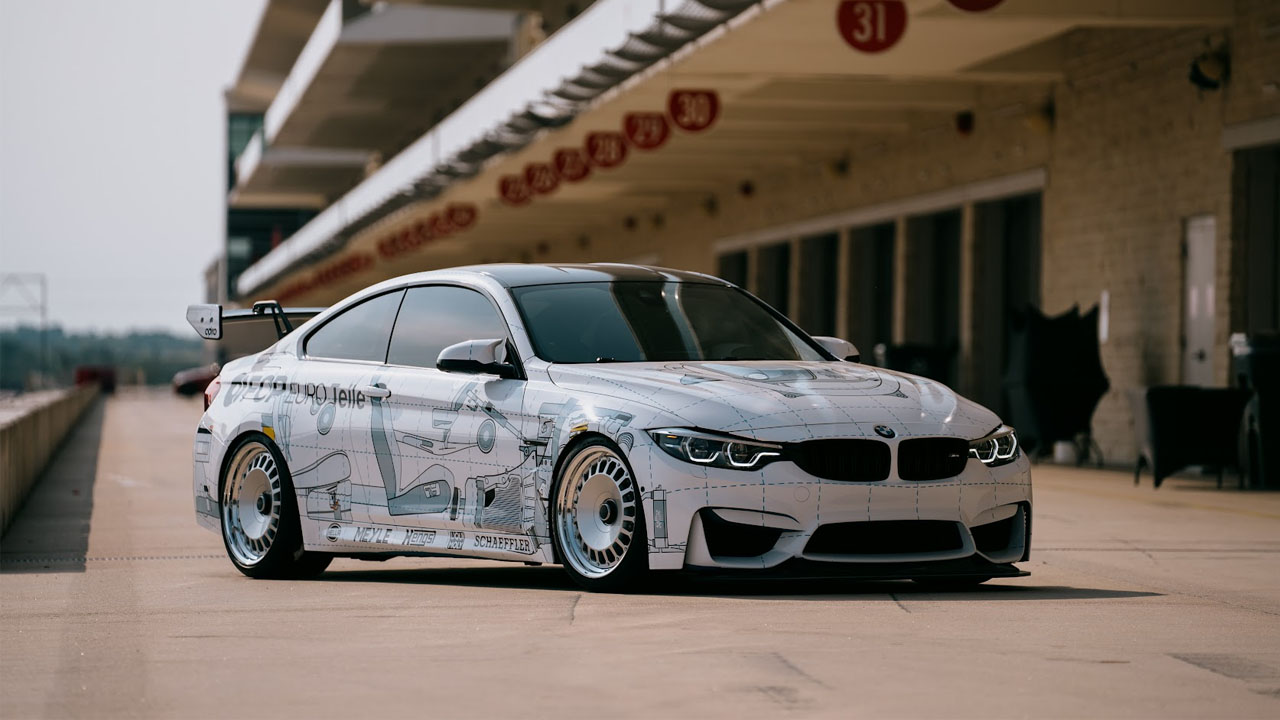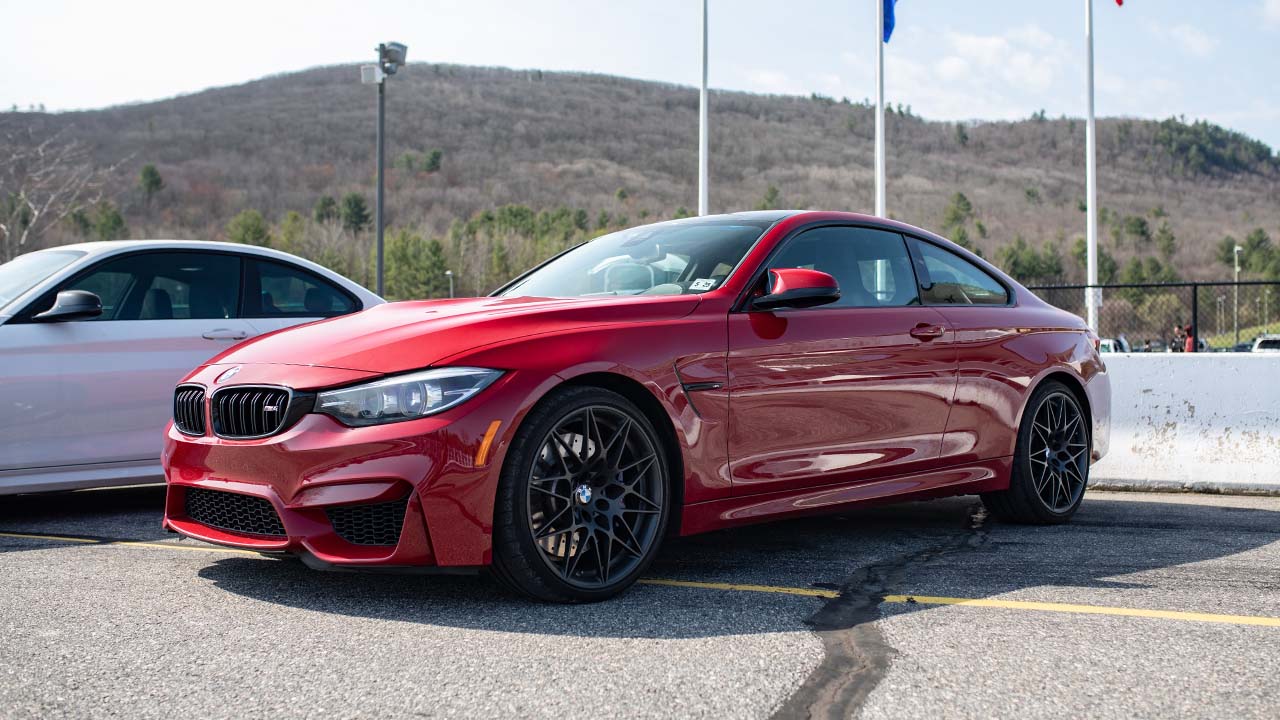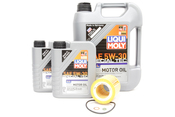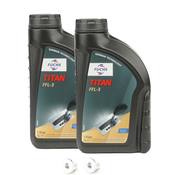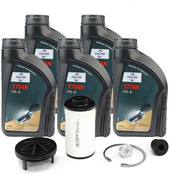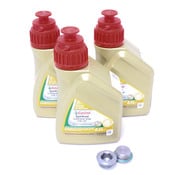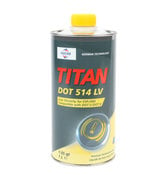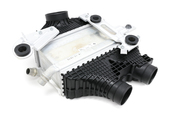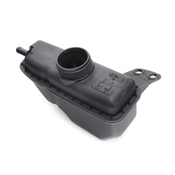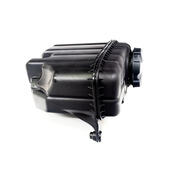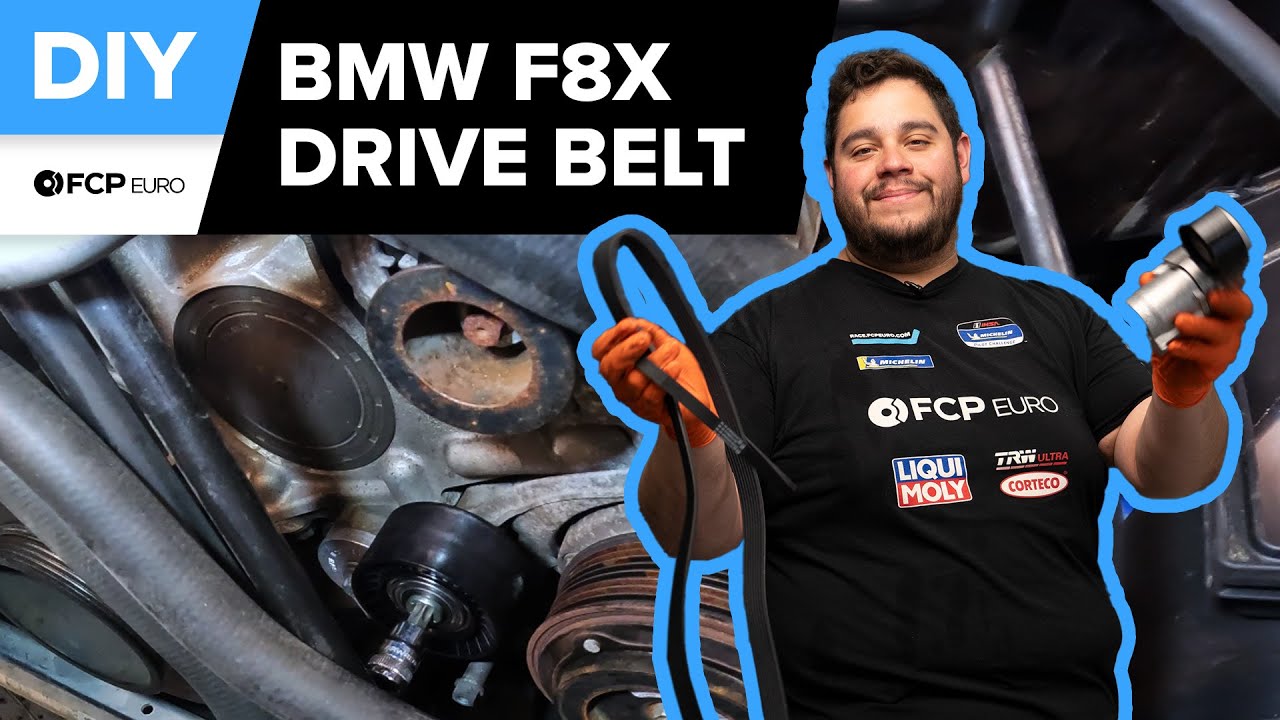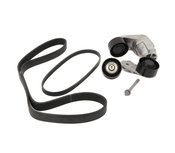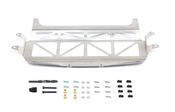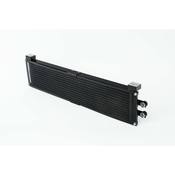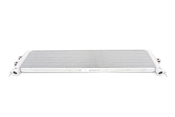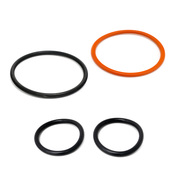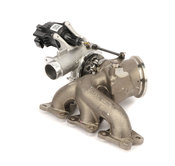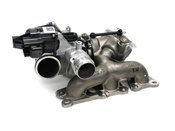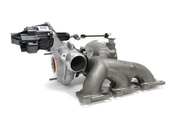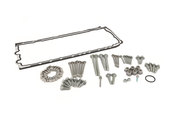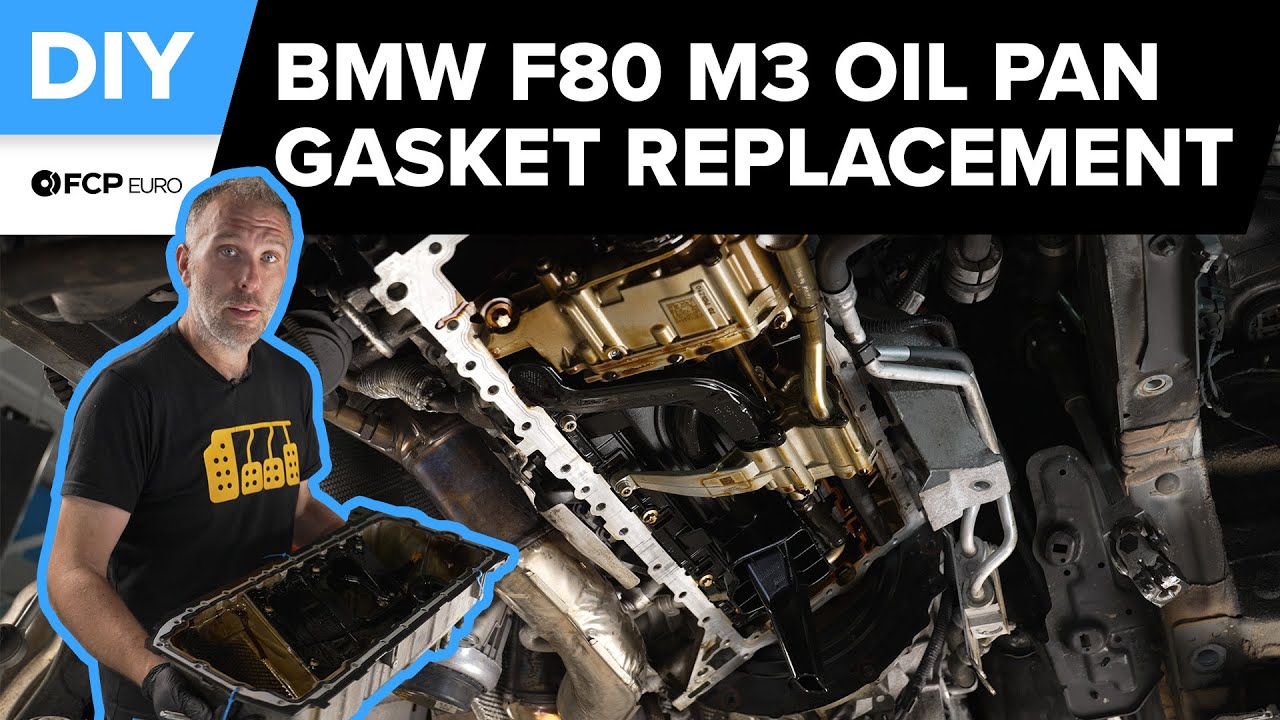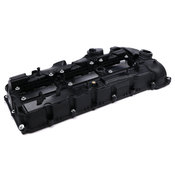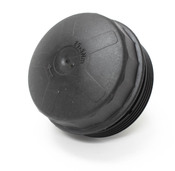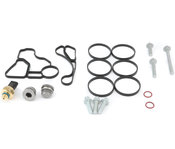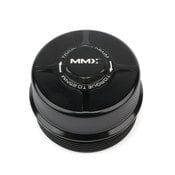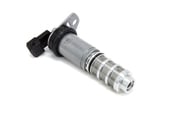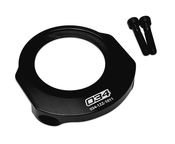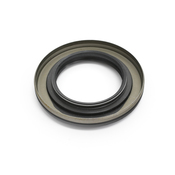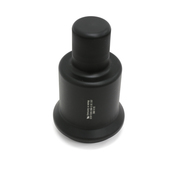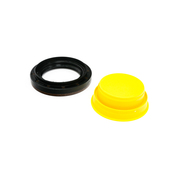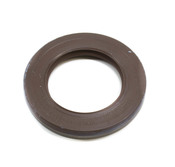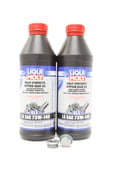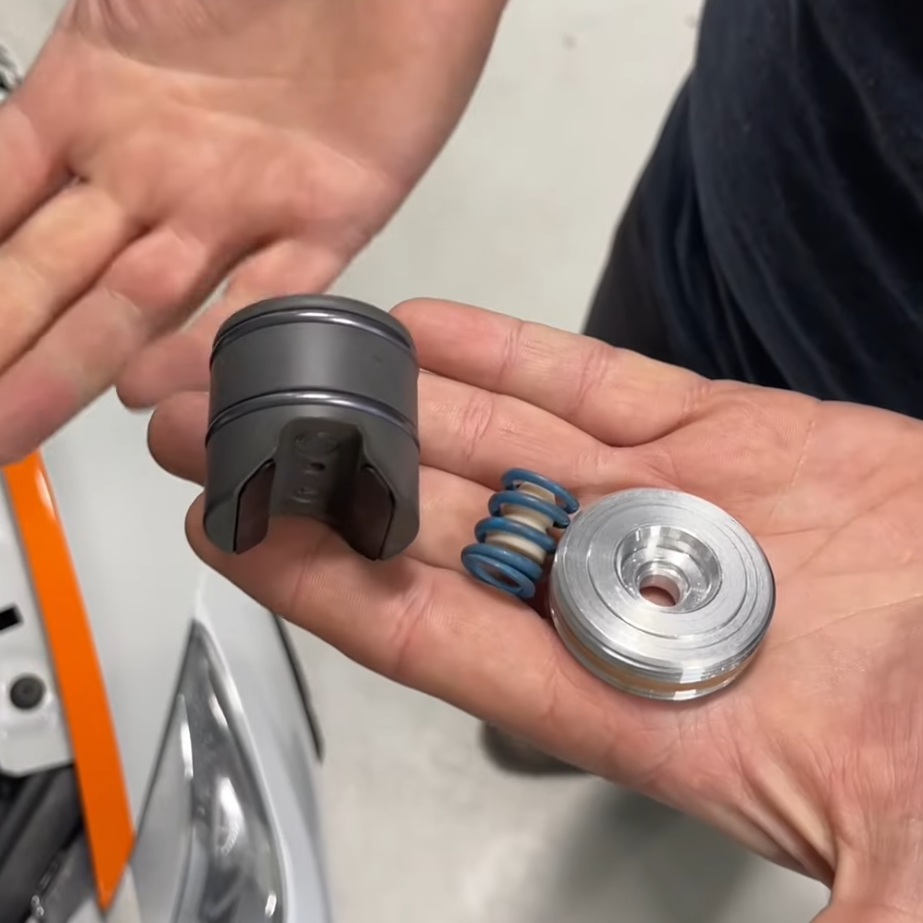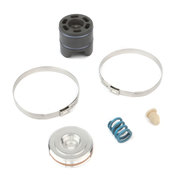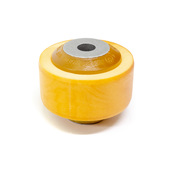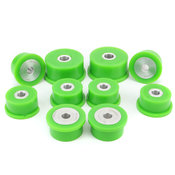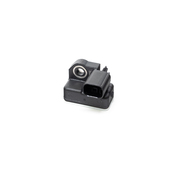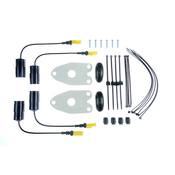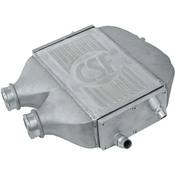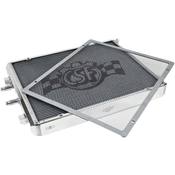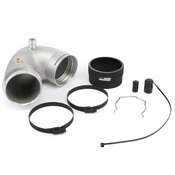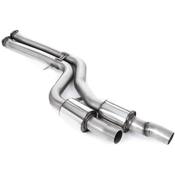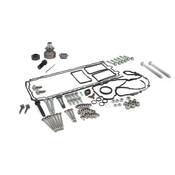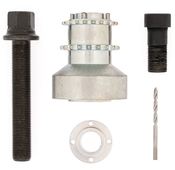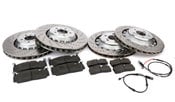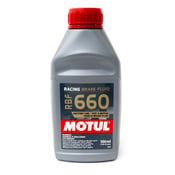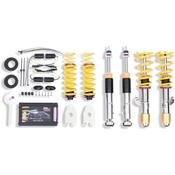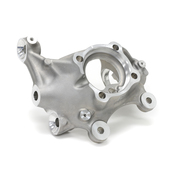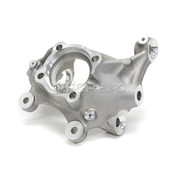BMW F82 M4 Parts
- BMW F82 M4 Fluids
- BMW M4 Engine Maintenance & Issues (BMW S55 Engine)
- Leaking Top Mounted Intercooler
- Leaking Expansion Tank(s)
- Auxiliary Belt Idler Pulley Failure
- Vulnerable Oil Cooler & Protection
- BMW F82 M4 Leaking Turbochargers (MHI TF035HL4W)
- Oil Pan Leaks
- Valve Cover PCV Failure
- Oil Filter Housing Leaks
- Failed VANOS Solenoid(s)
- Crank Hub Misalignment
- BMW M4 Drivetrain Maintenance & Issues
- Differential Input and Output Shaft Seal Leaks
- BMW M4 Suspension & Chassis Maintenance & Issues
- Steering Gear/Rack Knocking
- Differential Mount Bushing Wear
- Vertical Acceleration Sensor Causing EDC Malfunctions “Chassis Malfunction”
- BMW M4 Performance Mods, Engine & Power Upgrades, & Tuning (S55 Engine)
- Aftermarket Charge Air Coolers (Air-to-Water Intercooler)
- Dinantronics Piggyback Tune
- OE BMW S55 MHI Turbochargers Upgrade
- BMW M4 Aftermarket Exhaust
- Mechanically Locking The Timing Sprockets
- BMW M4 Brake Upgrades
- Carbon Ceramic to Steel Brake Conversion
- Track-Day Ready Brake Pads (Track Pads)
- Track-Day Ready Brake Fluid
- BMW M4 Suspension Upgrades
- Aftermarket BMW M4 Coilovers
- Increasing Camber With Factory Camber Correction Knuckles
- BMW M4 Adjustable Control Arms
- BMW M4 Information, Models, Production & Model Years
- BMW M4: Special Editions
- 2015 M4 DTM Champion Edition Marco Wittmann
- 2016 M4 GTS
- 2016 - Competition Package (ZCP) for the F82 and F83 M4
- 2017 M4 DTM Champion Edition
- BMW M4 Specifications
- BMW M4 Recalls
- 2020-10-28 - Fuel Injection System
- 2019-05-08 - Knee Bolster
- 2017-02-22 - Airbags
- 2018-10-10 - Driveshaft
- 2017-02-22 - Airbags
- 2016-12-19 - Airbags
- 2016-09-08 - Frame and members
- 2015-11-22 - Driveshaft
Launched in 2014, the BMW F82 M4 coupe and F80 M3 sedan ushered in a new era of turbocharged BMW performance cars. In conjunction with the F10 M5 and F06 M6, these M cars were BMW's largest step towards supercar performance to date. More than that, the F82 M4’s engine, known as the BMW S55, has been widely regarded as being one of the most reliable BMW M engines ever produced. Enthusiasts have noted ownership of over 100,000 miles to be without significant issues aside from minor leaks and regular maintenance. While the move to forced induction ruffled the feathers of BMW Motorsport die-hards, the tuning accessibility of the S55 engine transcended the fragility of BMW’s past, proving to be a supremely capable powerhouse.
BMW staggered production of the M3 and M4, with the latter arriving a year later. While that normally wouldn't mean much, Europe instituted a new emissions testing standard (WLTP) and requirements just as the M3 was set to enter its final model year. Instead of retrofitting the last series of M3s, BMW ended production early. However, the M4 had two more years of sales, so BMW went through with the requirements, allowing it to stay on sale for its entire and planned six-year model run.
Over six years of production, BMW released regular updates and special editions to keep the M4 fresh. After its first year in the States, the Competition Package (ZCP) arrived with a 19hp bump, Style 666M wheels, Adaptive M Suspension, and various black accents. A year later, BMW face-lifted (LCI) the M4 with a handful of new paint colors and exterior changes. Sprinkled in between all of those were the special editions, including the GTS, CS, Edition M Heritage, and DTM Championship edition. Various performance accessories, extra power, and lots of exclusivity make those few quite a bit more special than the "garden variety" M4s.
Engine F82 M4 |
SKU:
KIT-11427854445KT7
QTY
$78.85+
| ||||
Engine F82 M4 CS & GTS |
SKU:
KIT-11427854445KT7
QTY
$78.85+
| ||||
| Transmission Manual ZF GS6-45BZ |
SKU:
KIT-83222239654KT1
QTY
$70.96+
| ||||
| Transmission Dual Clutch (DCT) Getrag GS7D36SG |
SKU:
KIT-28107842840KT
QTY
$223.42+
| ||||
| Differential |
SKU:
KIT-33117525064KT6
QTY
$100.25+
| ||||
| Brake |
| ||||
| Power Steering | The F87 M2, F80 M3, and F82/ F83 M4 use an electric power steering rack, which does not require conventional hydraulic fluid. |
Leaking Top Mounted Intercooler
BMW’s S55 engine found in the F82 M4 uses a liquid-cooled charge air cooler (water-to-air intercooler) mounted on top of the engine. While its efficiency and effectiveness is one of the S55's distinct advantages over the N55 engine on which it’s based, the factory intercoolers have been known to leak internally. When this occurs, coolant enters the intake tract and, subsequently, the combustion chamber.
It should be noted that the S55 engine features two cooling circuits, with the intercooler running on the “low-temp” circuit and, therefore, not connected to the main engine radiator and expansion tank. The small coolant tank located behind the intercooler, as well as the secondary radiators within the wheel wells, are a part of the “low-temp” circuit, and this is the coolant that will escape into the intake tract when the OEM intercooler develops an internal leak. If you suspect your intercooler is leaking, inspect the reservoir behind the intercooler.
Fault Codes & Warnings:
- 20A201: Charge air, cooling system: Dry-running detected
- 140010: Combustion misfires, several cylinders: detected
- 128B01: Oxygen sensor before catalytic converter: Excess air detected
- 108920: Charge-air temperature sensor: Multiple fault
Leaking Expansion Tank(s)
While BMW has honed its craft over the past several decades, there’s one thing that they’ve never quite been able to nail down—coolant expansion tanks. The F82 M4 engine features two coolant reservoirs, one for both the high and low-temperature cooling circuits, respectively. While the low-temperature circuit reservoir is not prone to failure, the main expansion tank is. The plastic-welded tanks tend to split at the seams, and dried coolant is typically visible on the black plastic tank when they begin to fail.
Fault Codes & Warnings:
- Coolant level warning on the iDrive display
- Refill coolant message on the instrument cluster
- Engine temp too high warning on the instrument cluster
Auxiliary Belt Idler Pulley Failure
The BMW S55 engine features two separate drive belts, one auxiliary belt that drives the alternator and AC compressor, and a smaller belt for the water pump. The larger of the two belts features three idler pulleys, which are free-spinning. The bearings inside of these idler pulleys have been known to seize and ultimately melt or destroy the inside of the plastic pulley wheels. When this occurs, often accompanied by a high-pitch grinding noise from the engine bay, the auxiliary belt can tear and be ejected from the engine. It is generally worth replacing all three pulleys together, as all three bearings are the same design with similar service life.
Fault Codes & Warnings:
- Charging Malfunction, Battery Not Charging on iDrive display
- Various seemingly unrelated warnings due to low-voltage
Vulnerable Oil Cooler & Protection
The F80 M3, F82 M4 Coupe, F83 M4 Convertible, and F87 M2 all share a very compact and efficient cooling system package. While ideal for the race track, this package places the oil cooler in a highly vulnerable location - parallel to the ground and at the lowest point of the front end. Parking blocks and road debris are the natural predators of the S55s oil cooler assembly. It is relatively common to see a bent yet leak-free oil cooler. However, a punctured or cracked oil cooler will not only lead to low oil pressure and a disabled vehicle but can also create dangerous driving conditions as oil is spread onto the road surface and tires. It is strongly recommended to upgrade this shrouding with a steel guard as a preventative maintenance item.
Fault Codes & Warnings:
- Engine oil pressure too low warning in iDrive display
- Drivetrain Malfunction warning in iDrive display
- 1C0102 Engine Oil Pressure Control, plausibility static: Pressure too low
- 1FB801 Check Control: Engine oil pressure! Stop Cautiously
BMW F82 M4 Leaking Turbochargers (MHI TF035HL4W)
Average Failure: 60,000-100,000 Miles
The S55s twin turbos are known to be mostly reliable and issue-free; however, oil seal leaks can develop around 60-100k miles. Unfortunately, there are very few warnings for these leaks, and they are usually discovered only after a physical examination. These leaks range from minor O-ring leaks due to the PCV systems recirculation into the forward turbocharger inlet to larger oil leaks, which can significantly affect the turbos' longevity. Dark oil vapor can accumulate on the forward turbo, indicating a turbo inlet O-ring leak. Thicker oil residue will accumulate on the turbo and undertray, indicating a larger leak originating from the turbocharger bearing itself. A larger amount of residue at higher mileage necessitates inspecting the inside of the turbo inlet to determine whether or not the turbo needs replacing or rebuilding.
Fault Codes & Warnings:
- “Engine oil at minimum level. Please add 1 quart of engine oil” message on the iDrive display - typically after hard driving
- Visible oil vapor/ sludge accumulating on the underside of the vehicle and turbocharger
Oil Pan Leaks
The BMW M4 engine is based on the N55/N54 platform. While the S55 of the M4 rectifies and strengthens many aspects of the N55, some issues have carried over. A leaking oil pan gasket is one of the most frequently experienced issues from S55 and N55 owners. BMW F82 M4 engines produced until September of 2014 featured a magnesium oil pan, which, while very light, is much more prone to warping than the later aluminum pans. Lowering the subframe to replace the gasket and pan is less involved than one might think, and essential equipment to support the engine can help to make quick work of the replacement. It should be noted that if the VIN was assigned later in September of 2014, it was likely still produced with the magnesium oil pan.
Fault Codes & Warnings:
- Visible oil wetness around and above the oil drain plug
- Visible oil wetness around the oil pan gasket visible from the side
Valve Cover PCV Failure
Average Failure: 70,000-100,000 Miles
The BMWS55 engines feature a PCV plastic welded to the valve cover. This membrane tends to harden and crack around 70-100k miles, causing a loss of crankcase vacuum, rough running, and a loud hissing/ whistling sound from the engine bay. Removing the oil cap while the engine is running will test whether the hissing subsides will confirm the PCV issue. While it is possible to avoid replacing the valve cover and replace only the cap by cutting away the internal tab, the valve cover gasket is likely to require preventative maintenance anyway.
Fault Codes & Warnings:
- 118002 Mixture control: mixture too rich
- 118102 Mixture Control 2: Mixture too rich
- 1118001 Mixture control: mixture too lean
- 118101 Mixture Control 2: Mixture too lean
Oil Filter Housing Leaks
Average Failure: 60,000-70,000 Miles
A leaking oil filter housing is one of the most common oil leaks encountered by M2, M3, and M4 owners. While the oil filter housing is aluminum, the ACM (acrylic rubber) gaskets will harden, compress, and crack from heat before leaking. A failed oil filter housing gasket (OFHG) will cause oil to leak down the entire engine and accumulate on the drain plug. Oil will also tend to pool in the reinforcement ribbing on the oil filter housing, usually visible in the engine bay. The OE plastic oil-filter-housing caps can also warp over time and create similar symptoms.
Failed VANOS Solenoid(s)
The BMW F82 M4 features dual variable valve timing through BMW’s VANOS system, which uses oil pressure to control the position of the intake and exhaust camshafts. Oil pressure control is provided by the VANOS solenoids, one per camshaft. Failing solenoids often cause erratic engine performance and rough running, as the pressure they provide isn’t accurate. As the engine requests a certain camshaft position and fails to achieve it, engine codes for camshaft position errors will occur on the intake and exhaust cams. It may also cause misfires, limp mode, and reduced power.
Fault Codes & Warnings:
- 13E201 - Suspected VANOS fault
- 3F2012 - Suspected VANOS fault
- P13C0 - VANOS intake: Closed loop control fault, camshaft sticks
- P052B - VANOS, intake side, cold-start: No closed-loop control possible
- 140010 - Combustion misfires, several cylinders: detected
- 131501 - Variable Camshaft Timing Control (VANOS) Intake, Cold Start: Not Controllable
- 131401 - Variable Camshaft Timing Control (VANOS) Intake, Cold Start: Not Controllable
Crank Hub Misalignment
The BMW M4 engine, the S55, features a unique timing design, as the sprocket, which drives the timing chain in time with the crankshaft, has no mechanical lock against the crankshaft snout. The two components are clamped together by a 108mm M18 stretch bolt and fortified with an etched friction ring that bites into the surface of the timing chain sprocket and crankshaft.
Significant shock-loading from aggressive shifting or additional power from tuning can overwhelm the bolt and etched ring, causing the engine to spin out of time. In most cases, it’s not enough to cause piston-to-valve contact. However, continuing to be aggressive or pushing engine performance further without upgrading to a single-piece or pinned/dog-ring engaged pin hub will likely end in permanent engine damage.
Fault Codes & Warnings:
- 130E20 - Intake camshaft: angular offset to the crankshaft outside tolerance
- P0343 - Camshaft Position Sensor “A” Circuit High Bank 1 or Single Sensor
- P0368 - Camshaft Position Sensor “B” Circuit High Bank 1 or Single Sensor
- 130F20 - Exhaust angular offset to the crankshaft outside tolerance
- E0BC43 - Signal Status Availability Chain Brush received invalid or brake chain not available
- 120406 - Charge pressure control, shutdown: pressure build-locked
- 13E201 - Suspected VANOS fault
- 3F2012 - Suspected VANOS fault
Differential Input and Output Shaft Seal Leaks
No matter the differential style, the differentials on F82 M4 and F83 M4 are prone to leaks from the axle shaft seals and the input shaft seal. The differential must be removed from the car to replace these seals, as they require careful installation. It is strongly recommended that this work be performed on a lift, as it’s very difficult to access and remove the differential and differential hardware without ample space underneath the car.
Steering Gear/Rack Knocking
The F80 M3, F82/ F83 M4, and F87 M2 all share electric steering racks, like those found in other BMW 2, 3, and 4 series. Unfortunately, the racks can suffer from accelerated wear of the thrust spacer or thrust bushing. When this thrust bushing wears, it allows for an overly loose preload of the pinion gear within the steering rack, resulting in a loud and tangible clunking within the steering components. While the dealership will typically prescribe a replacement of the steering rack and associated hardware, that's only sometimes necessary. A relatively simple replacement of this thrust bushing or a tightening of the preload adjustment cap can remedy the problem.
Differential Mount Bushing Wear
The F80 M3, F82/ F83 M4, and F87 M2 feature a unique hard-mounted subframe, a motorsport-derived design that makes the car feel more communicative and stable on track. While it improves the road feel, it also gives less room for bushing movement and reduces shock absorption from the drivetrain. It's not an issue for the mechanical parts, but the single differential bushing suffers, often experiencing accelerated wear. Miraculously, BMW did include a second but unpopulated receiver. Install a secondary differential bushing into the receiver and add a new mounting bracket to stop the quickly deteriorating single bushing from causing an issue in the future.
Vertical Acceleration Sensor Causing EDC Malfunctions “Chassis Malfunction”
EDC, or electronic damper control, is a system fitted to vehicles featuring "M Adaptive Suspension." It was an option through 2016 and later became standard equipment for 2017 model-year vehicles. The system varies the flow of oil through the damper's piston to control the damping rate. While brilliant, the system's complexity can cause strange behavior when components are overheated or begin to fail due to age. Every car fitted with EDC utilizes a vertical acceleration sensor to determine the wheel damping rate and adjust accordingly. When this acceleration sensor fails due to damage or age, the EDC system has no damping reference and will default to fully stiff. EDC can be disabled with an electronic bypass to avoid the error messages listed below when using a non-adaptive coilover.
Fault Codes & Warnings:
- “Chassis Malfunction, Drive Moderately” Error on iDrive Display
- “Chassis Function Restricted” Error on iDrive Display
- 600A - EEPROM Error
- 005FE6 - Valve Error Front
- 482941 - Rad Acceleration Sensor
- 482A2A - Valve Coil Open Circuit
The F87 M2, F80 M3, and F82/ F83 M4 have proven to be one of the most tunable BMWs ever produced. The aftermarket has discovered multitudes of the factory horsepower and grip from DIY improvements and upgrades. While tuning can be a subjective art, there’s no doubt that the S55 and F8X platforms can be heavy hitters once modified.
The S55 engine is well known for its distinctive low-end torque provided by its two very responsive turbochargers. Pushing the S55 beyond its factory calibration within reason is surprisingly straightforward: just improve the air density (cooling), timing, and flow.
Aftermarket Charge Air Coolers (Air-to-Water Intercooler)
Supporting the F82 M4’s engine with cool air is as important as using high-quality fuel. BMW uses a charge air cooler (or intercooler) on all of their turbocharged models to ensure the pressurized air from the turbo is as cold as possible. Cold air is denser than hot air, which provides more power. It also lowers combustion temperatures, ensuring pre-ignition doesn’t occur. Also called knock or ping, pre-ignition is when the air and fuel mixture ignites before the spark plug discharges. While not horrible in random occurrences, extended periods of pre-ignition will damage mechanical engine components and hurt power output.
The S55 engine is capable of much more power than BMW gave it, but safely pushing beyond that level isn’t possible without a larger intercooler. Thankfully, the aftermarket has made upgrading the individual cooling components on the F82 M4 and F83 M4 very easy. Quality aftermarket intercoolers feature a 60% larger core than the OE unit at their smallest, while some push that figure substantially farther. The larger core means more surface area for the water to cool the charger air and more water in the low-temp cooling circuit, which will take longer to be affected by the incoming charge air. Pair this with some other choice upgrades for the intake side, and a couple of common S55 engine problems will be no more.
Dinantronics Piggyback Tune
Dinan has been a world-renowned BMW tuner since 1979. Their main selling point almost always comes down to their testing, quality, customer service, and their product’s subsequent longevity. Many were skeptical when Dinan announced that they would be backpedaling from bespoke software tuning to create a piggyback tuning system for the F8X platform. However, by retaining factory engine protection, CARB certification, and factory refinement, Dinan has created a sweet spot in the market with the Dinantronics X piggyback tuner. The Dinantronics X can deliver an additional 69 hp and 81 lb-ft of torque, all for less than the cost of a brake service.
OE BMW S55 MHI Turbochargers Upgrade
The S55 engine features two responsive 51mm Mitsubishi turbochargers that provide gobs of low-end torque. Turbocharger response and sizing is optimized for a given RPM and load range, and in the case of the M3, it was for a grunty 1850-5500 rpm, with peak horsepower available at 5500 rpm. Fueling, cooling, and tuning upgrades will help push the OE turbos beyond factory output (roughly 550whp), but not too far without drawbacks. Overspinning the OE turbochargers to a significant degree will only produce additional heat and a diminishing return on power and longevity.
CHRA swaps and “hybrid” turbochargers are really all that’s needed for a substantial boost in power. Both options retain factory mounting points, if not the OE housings and accessories, to ensure replacement is as simple as possible. A range of products fit under those titles, with a breadth of performance increases depending on the kind of power you’re looking for. For those looking for near hypercar figures out of your M82 M4’s engine, entire turbocharger replacements with larger units are typically the best option for longevity.
That all goes without saying that exhaust upgrades will significantly benefit turbocharger performance, no matter which you’re using. Increasing the difference in pressure between the inlet and outlet of the turbine housing with a high-flowing catalytic converter and/ or secondary catalyst removal will allow the turbocharger to operate more efficiently with quicker response.
BMW M4 Aftermarket Exhaust
The F82 M4 and F83 M4 have an exhaust note that has split the opinions of the BMW faithful. Just as BMW moved from the rasp of a straight six to the bark of the S65 V8 with the prior generation, BMW had once again changed the vocal attitude of the M3 thanks to its turbochargers and associated tuning. While many enjoy the aggressive and purposeful sound of BMW’s S55 engine, others seek to mimic the more familiar tone of prior generations of M cars. Luckily, you have options when upgrading to a high-flow aftermarket exhaust.
“Equal-length” exhaust options will return the sounds of old to the M4. Adding additional length to the passenger-side exhaust tubing means the rearmost bank of 3 cylinders receives the same overall length of exhaust piping as the forward bank. This equal exhaust length will create evenly spaced exhaust pulses at the exhaust tips and, therefore, a smoother, higher-pitch traditional BMW sound. If you prefer the M4’s natural tone, stick to a non-equal-length piece.
Mechanically Locking The Timing Sprockets
BMW tends to strike a balance between performance engineering and affordability, generally leaning towards one or the other. With the closed-deck, twin-fuel-pump, twin-turbocharged, twin-cooling system S55 engine in the F82 and F83 M4, BMW didn’t skimp on performance engineering - for the most part. Unfortunately, one of the most critical and difficult-to-access components of the S55 engine succumbed to cost-cutting, and that’s the link between the bottom and top end of the engine.
The S55’s crankshaft snout is effectively blank, with only an M18 threaded hole. There are no pins, dogs, or splines for driving the crankshaft sprockets - a choice to save costs on machining and assembly time. The only connection between the sprockets, which drive the timing chain and oil pump, is the friction between each sprocket provided by the crank bolt. Under shock-loading, such as on-track DCT shifting, and especially with increased power, the torque sent through this connection exceeds the friction between the sprocket and the crankshaft, causing misalignment. While not incredibly common on stock vehicles, it’s a serious issue for those with increased power, so more than a few aftermarket BMW performance part manufacturers have come out with their “best version” of a fix. It’s a must if you’re boosting performance.
Carbon Ceramic to Steel Brake Conversion
Since Formula 1 adopted carbon ceramic braking systems, including carbon-on-carbon systems, carbon ceramic brake options have become something of automotive high-fashion. While very fade-resistant and extremely long-lasting, their performance is only marginally superior to steel brakes. Recent tests have shown that F80 and F82/F83 M4 steel brakes generate the same lateral and longitudinal G-force loads and stopping distances as carbon ceramic units while still being fade-resistant with the appropriate (upgraded) brake pad. Therefore, when it comes time to perform a regular brake service or replace a damaged rotor on an M4 with carbon ceramics, converting these cars to steel braking systems is much more practical. If you need more convincing, BMW Motorsport utilizes steel brakes for GT4, GT3, GTD, Le Man/ WEC, and DTM racing series.
Track-Day Ready Brake Pads (Track Pads)
Regardless of the brake package, the F82 M4 and F83 M4 have fantastic braking systems compared to their predecessors. Large calipers, great air ducting, and multi-piece rotors make it a fantastic basis for dependable stopping power. With that said, BMW understands that owners will mostly drive on public roads, so the OE pads are meant for those circumstances.
While the OEM brake pads perform well in the low-medium range of brake system temperatures, a single lap of any road course will have them well outside their safe range. Upgrading to a brake pad designed to survive and thrive in the abuses of a race track is a must for anyone looking at driver’s ed events or open-lapping days. Hawk, Ferodo, and EBC all supply the track-capable brake pad you’re looking for in a handful of flavors each. Everything from a dual-purpose street-capable pad to full-on endurance racing stuff is available to keep your F82 M4 stopping quickly and repeatedly.
Track-Day Ready Brake Fluid
If you’re a regular track-day goer, you’ll want to also upgrade to a higher-caliber brake fluid. You can read all about the nuances of brake fluid types and what they’re meant for over on our blog, but in short, know that the OE brake fluid won’t survive much longer than the OE brake pads. The F82 and F83 M4 are relatively heavy and make lots of power, so the brakes often generate lots of heat, which is then transferred into the brake fluid. Fluid meant to withstand the race track has a much higher boiling point than one meant for daily driving, and skipping on it may mean losing your brakes at the end of the fastest part of the track you're on. Flushing out the OE fluid for something more durable is one of the least expensive and most meaningful changes you can make for your BMW's performance and your safety.
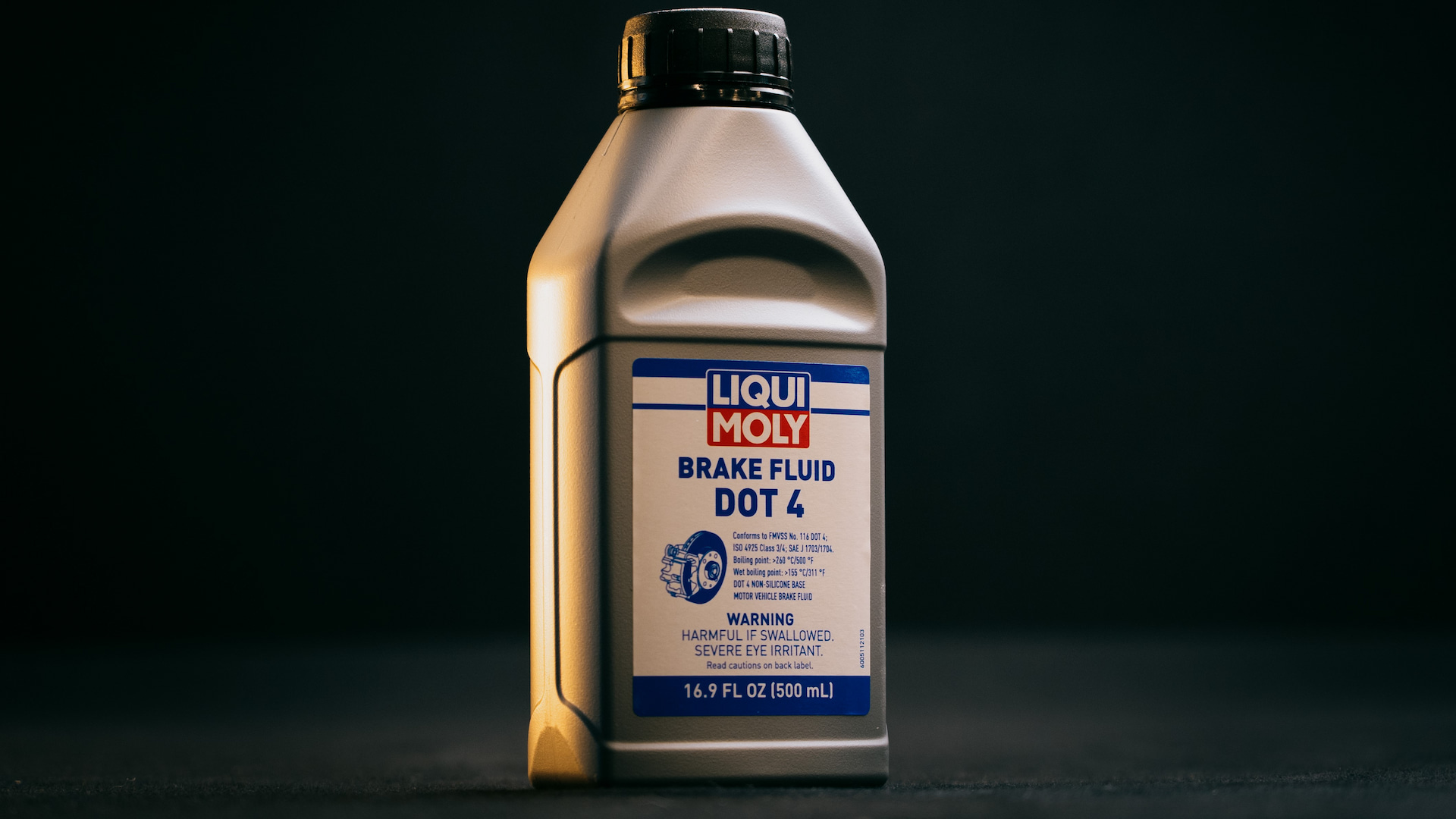
Aftermarket BMW M4 Coilovers
The F82 M4 and F83 M4 ride on decades of BMW M engineering wrapped in the latest adaptive technology. Adaptive dampers in the form of BMW's Electronic Damper Control, or EDC, underpin all 2017 model year and newer examples. Meanwhile, 2015-16 models have it if originally optioned with them under the M Adaptive Suspension package. It's an incredibly responsive system that allows the driver to change the suspension's stiffness at the push of a button to suit the road conditions and driver's style. However, its inclusion can make upgrading to aftermarket coilovers a bit tricky.
As good as the suspension is out of the box, it's a compromise for mostly street duty. Aftermarket coilovers from trusted suppliers can provide the more aggressive stance and performance you're looking for, but only if you choose the correct kit. A computer controls the EDC dampers, and if your coilover choice doesn't have that functionality, there will be a constant error message on the instrument cluster.
For vehicles featuring EDC (Electronic Damper Control), there are two great options from Bilstein and KW. The former has lots of experience with adaptive suspension, having worked closely with Porsche for their PASM system and with motorsports teams around the globe to deliver championship-winning setups. On the other hand, KW’s DDC coilover kit has become a favorite among M4 owners for its ability to seamlessly transition from daily-level comfort to track-capable sharpness, and KW's long-time support of motorsports is nothing to ignore.
That said, keeping the adaptive functionality comes at a cost, literally. Choosing a manually adjustable coilover is generally less expensive and opens up more options from highly regarded manufacturers Ohlins and AST. Both offer an excellent choice for a single-adjustable dual-purpose type coilover comparable to Bilstein's PSS10. KW's V3 is similar but features separate adjustments for rebound and compression, allowing you to really dial in your damping to your preferences. If those aren't serious enough, "Clubsport" coilovers meant for chasing lap records are available, too. Installing these on a model with EDC requires special coding to remove the error message or KW's EDC deactivation kit.
Height-adjustable spring kits are available for those just looking to improve the stance of their M4. However, shortening the shock travel of your factory dampers can negatively affect the way the ride and their longevity.
Increasing Camber With Factory Camber Correction Knuckles
Due to the design of the F87 M2, F82/ F83 M4, and F80 M3 front suspension, the camber adjustment is fixed from the factory. There are two options for adding negative camber on the front axle, one of which is possible with only OEM components. BMW produced camber-correction uprights with the intended use of correcting camber on damaged vehicles. These camber-correcting knuckles are sold in +/- 30 increments, which equates to 0.501 degrees of camber +/-.
BMW M4 Adjustable Control Arms
Like the E90 M3 CRT and E92 M3 GTS before it, the F82 M4 and F83 M4 feature hard-mounted subframes. BMW rear subframe bushing replacements have long been a regular job for owners looking to remove some of the vagueness from the rear end, but now BMW has done it themselves, leaving only suspension arms to sort out.
Adjustable suspension arms have been a common upgrade for BMWs for decades, and retrofitting them into any F82 or F83 is sure to improve the best M4 characteristics. Aftermarket arms ditch the squishy rubber bushings, and solid construction for tubular aluminum rods and threaded heim-jointed rod ends for a superior feel and nearly unlimited adjustability. In the rear, both upper arms, traction, and toe links have adjustable aftermarket units ready to set up your M car for track duty. Up front, the tension strut and control arm can have the same treatment, giving you track width, caster, roll center, bump steer, and camber adjustments. You may be eyeing that sweet set of coilover everyone has been chatting about on the forums, but suspension alignment does a lot for the M4’s handling characteristics. A set of adjustable arms is a great place to start your suspension modification journey.
The 2015 model year BMW F82 M4 Coupe and F80 M3 Sedan first debuted at the North American International Auto Show in 2014 and soon entered production later that year. Based on the F30 and F32 3 series, respectively, the M variants share only a small host of body panels and hardware with their more relaxed counterparts. Compared to its predecessors, the M4 is lighter, wider, longer, more powerful, and more configurable.
The F82 M4 had a relatively long run, with a six-year production cycle spanning June 2014 to June 2020. Within that run, BMW sprinkled in several special editions, with the GTS being the most influential among enthusiasts. A facelift arrived in 2018 with new “BMW IKON” hexagonal headlights, taillights, dashboard stitching, and “Competition” badging to reflect examples equipped with the ZCP Competition Package introduced in 2016.
The M4 CS began the F82 M4’s golden hour with a bump in power, deep blue San Marino paint, and some choice GTS componentry coupled with updated styling. The final special edition, the 2020 M4 Edition M Heritage, offered throw-back M colors with accenting aesthetic additions like M-striped carbon fiber interior trim and the M4 Competition’s engine calibration.
The F82 M4 was also built at BMW’s home in Munich, becoming the first time an M-car was produced there since the E30 M3. With many former box-flare-trained staff still working at the facility in 2014, it’s no wonder the M4 has a familiar presence.
-
2015 M4 DTM Champion Edition Marco Wittmann
Following BMW’s team RMG DTM victory in 2014 with Marco Wittmann, BMW issued a commemorative M4 edition in colors matching the winning car. This edition was functionally the same as a base F82 M4, including various M Performance aesthetic parts and Marco’s signature on the door sills and Dashboard.
-
2016 M4 GTS
Treading in the footsteps of the E30 M3 Sport Evo II, E36 M3 GT, E46 M3 CSL, and the E92 M3 GTS, the F82 M4 GTS was explicitly designed for “Club Sport Events”, AKA track days. The drivetrain, chassis, suspension, and interior were all modified to suit track duty while staying true to the M3’s philosophy. BMW even stated in their vehicle training manual for the M4 GTS, “Thanks to targeted modifications to improve performance and safety, the BMW M4 GTS is ready for driving on the race track in club sport competition and at the same time offers the possibility of vehicle type approval for street use. The driver can thus make his way to the race track in his own sports vehicle or can also use the car to drive to work.” The race on Sunday sell on Monday mentality harkened back to the roots that founded BMW M and struck enthusiasts’ hearts.
BMW also removed a card from the enthusiast’s deck by stabilizing track performance with water injection. Water methanol is common in drag and circuit racing to keep intake temperatures cool and avoid pre-ignition under high boost levels. BMW took this hot-rodding aspect to the max with the F82 M4 GTS’s S55B30T0 engine and incorporated distilled water injection directly into the intake manifold fed by a baffled 5 liter/1.3-gallon water tank and pump in the trunk. That, coupled with a bespoke engine map, boosted the S55’s output to 493hp for the GTS.
Beyond water injection, it received track-focused reliability upgrades with a 500mL bump in oil capacity and a shim for the oil level sensor to cope with the 1.4g of acceleration possible from the GTS. Downstream, a bespoke exhaust system sheds the center muffler from the base M4 and gains an ultra-light titanium rear silencer/muffler. BMW also modified the DCT (Dual Clutch Transmission) calibration for quicker shifts, and it’s since been copied and flashed into many M4s worldwide with high praise. A manual override for the Park gear was provided in the GTS with a red handle for regular loading onto transport trailers.
Exterior modifications included a CFRP (Carbon Fiber Reinforced Plastic) hood, aesthetic rear diffuser, adjustable rear wing based on the E90 320si WTCC wing design, and a GTS-specific adjustable front splitter. On the interior, things were more than just skin-deep. It featured a complex CFRP support, basic single-zone climate control, and manual front seats, with the option for fixed buckets. Sound deadening was kept to a minimum, but the rear seats were removed. Leather door cards were replaced with carbon fiber panels and door pull straps. A foam-padded steel half-cage painted in BMW Acid Orange rounded out the motorsports-inspired additions. The audio system was limited to a total of 6 speakers, with a single tweeter, mid-range, and bass speaker per side.
Other chassis upgrades included Carbon Ceramic Brakes as standard, a rear sway bar from the Competition Package, a Carbon Fiber front stiffening plate, and a set of manually adjustable coilovers developed in partnership with KW. These coilovers are similar to the KW Clubsport series, with a bespoke mounting system for the GTS. The wheels were a double-staggered set of 19x9.5” front and 20x10.5” rear 666M wheels with Acid Orange accents, though M Carbon Compound wheels were optional. While the Carbon Compound wheels saved 14 lbs, they were a $17,000 option in 2015. No matter which was specced, Michelin Cup 2 tires were standard.
-
2016 - Competition Package (ZCP) for the F82 and F83 M4
While only an options package, the ZCP Competition affected nearly every aspect of the M4s attitude. Announced in January of 2016, it added M Adaptive suspension with revised springs, dampers, and roll bars to sharpen handling. Drive modes were re-configured along with a new revision of the M active differential tuning and stability control calibration. A remapped engine raised power to 444 hp while torque remained steady at 406 lb-ft.
Possibly the most memorable part of the ZCP package however was the return of the basketweave. The devilishly named 20” “Style 666M” wheels resembled BBS’ of old. Blacked-out exhaust tips and badging, along with shadowline trim and black grills added to the sinister look. The interior featured new “lightweight” M Sports seats with cut-outs in the backrests, accented by M-stripe seatbelts.
-
2017 M4 DTM Champion Edition
Following a successful season in the 2016 DTM Championship, another DTM Champion Edition M4 was created, this time, packing a larger punch. It featured the same fundamental modifications as the M4 GTS, such as the stripped-down interior and a slightly more restrained exterior thanks to M Performance parts over the GTS's wing and front splitter. The 2017 DTM Champion edition was the only other BMW outside the GTS to receive factory water injection.
| Specification | Details |
|---|---|
| Wheelbase | 2812 mm / 110.7 in |
| Dimensions (LxWxH) | 4671 mm x 1870 mm x 1383 mm |
| Drive Type | RWD |
| Gearbox | ZF GS6-45BZ 6-Speed Manual Transmission, Getrag GS7D36SG 7-Speed Dual Clutch Transmission (DCT) |
M4 Base
| Specification | Details |
|---|---|
| Horsepower | 425 hp @ 7300 rpm |
| Torque | 406 lb-ft @ 1850-5500 rpm |
| 0-60 Time | 4.0s (3.8s w/ DCT) |
| Weight | 3,585 lbs |
| Wheel & Tire Size | 18” Wheels, 255/40/ZR18 Front, 275/35/ZR18 Rear |
M4 Competition
| Specification | Details |
|---|---|
| Horsepower | 444 hp @ 6250 rpm |
| Torque | 406 lb-ft @ 1850-5500 rpm |
| 0-60 Time | 3.9s (3.7s w/ DCT) |
| Weight | 3,625 lbs |
| Wheel & Tire Size | 20” Wheels, 265/30/ZR20 Front, 285/30/ZR20 Rear |
M4 CS
| Specification | Details |
|---|---|
| Horsepower | 453 hp @ 6250 rpm |
| Torque | 442 lb-ft @ 4000 rpm |
| 0-60 Time | 3.8s w/ 7-speed DCT |
| Weight | 3,620 lbs |
| Wheel & Tire Size | 19” Wheels, 255/35/ZR19 Front, 275/35/ZR19 Rear |
M4 GTS
| Specification | Details |
|---|---|
| Horsepower | 493 hp @ 6250 rpm |
| Torque | 443 lb-ft @ 4000 rpm |
| 0-60 Time | 3.5s w/ 7-speed DCT |
| Weight | 3,329 lbs |
| Wheel & Tire Size | 19” Front (265/30/ZR19), 20” Rear (285/30/ZR20) |
